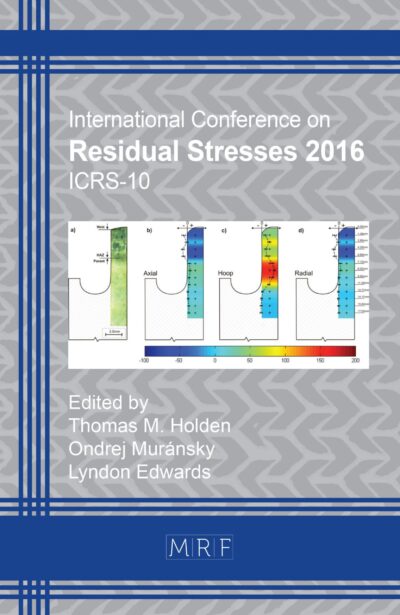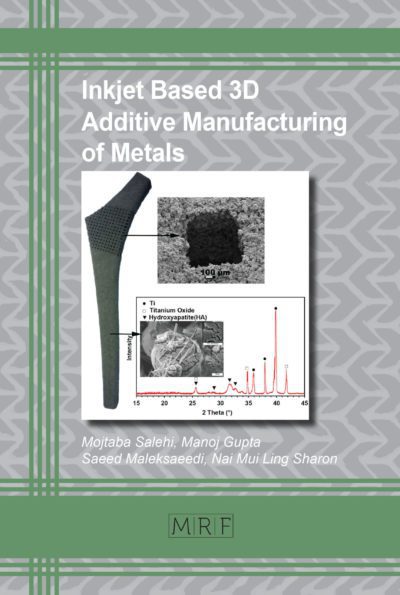Enhancing surface quality and corrosion resistance of LPBF nitinol alloy through electrochemical polishing
Matteo Tognazzo, Rachele Bertolini, Andrea Ghiotti, Stefania Bruschi
Abstract. The use of additively manufactured (AM) nickel-titanium (NiTi) alloys in biomedical applications is gaining increasing attention due to their unique properties, such as the shape memory effect (SME) and superelasticity (SE). Given the stringent requirements for surface quality and corrosion resistance in biomedical products, electrochemical polishing (EP) emerges as a promising surface finishing technique. However, to date, most research studies have focused on EP as a finishing method for conventionally fabricated NiTi parts, with process parameters optimized for wrought Nitinol components. This study aims to bridge this gap by determining the optimal EP time to improve the surface finish of AM martensitic NiTi cylinders and evaluating the impact of different process conditions on their corrosion resistance. The results indicate that increasing EP time enhances surface roughness up to a certain threshold, beyond which further improvement becomes inefficient. Similarly, corrosion resistance improves with smoother surfaces, but this effect also plateaus beyond a certain point.
Keywords
Nitinol, Additive Manufacturing, Electrochemical Polishing, Surface Finish
Published online 5/7/2025, 11 pages
Copyright © 2025 by the author(s)
Published under license by Materials Research Forum LLC., Millersville PA, USA
Citation: Matteo Tognazzo, Rachele Bertolini, Andrea Ghiotti, Stefania Bruschi, Enhancing surface quality and corrosion resistance of LPBF nitinol alloy through electrochemical polishing, Materials Research Proceedings, Vol. 54, pp 2210-2220, 2025
DOI: https://doi.org/10.21741/9781644903599-238
The article was published as article 238 of the book Material Forming
![]() Content from this work may be used under the terms of the Creative Commons Attribution 3.0 license. Any further distribution of this work must maintain attribution to the author(s) and the title of the work, journal citation and DOI.
Content from this work may be used under the terms of the Creative Commons Attribution 3.0 license. Any further distribution of this work must maintain attribution to the author(s) and the title of the work, journal citation and DOI.
References
[1] J. Mohd Jani, M. Leary, A. Subic, and M. A. Gibson, “A review of shape memory alloy research, applications and opportunities,” Mater. Des., vol. 55, pp. 537-542, Apr. 2014. https://doi.org/10.1016/j.matdes.2013.11.084
[2] G. Mani, D. Porter, K. Grove, S. Collins, A. Ornberg, and R. Shulfer, “Surface finishing of Nitinol for implantable medical devices: A review,” J. Biomed. Mater. Res. B Appl. Biomater., vol. 110, pp. 1035-1046, Dec. 2022. https://doi.org/10.1002/jbm.b.35112
[3] U. R. Dahiya, S. Singh, C. K. Garg, A. Rai, and D. Kalyanasundaram, “Modified surface composition and biocompatibility of core-shell Nitinol nanoparticles fabricated via laser ablation of differently passivized targets,” Front. Mater., vol. 9, Apr. 2022, Art. no. 855705. https://doi.org/10.3389/fmats.2022.855705
[4] K. Safaei et al., “Additive manufacturing of NiTi shape memory alloy for biomedical applications: Review of the LPBF process ecosystem,” J. Mater. Sci. Technol., vol. 82, pp. 142-162, Dec. 2021. https://doi.org/10.1007/s11837-021-04937-y
[5] N. D. Dejene and H. G. Lemu, “Current status and challenges of powder bed fusion-based metal additive manufacturing: Literature review,” Metals, vol. 13, no. 2, Art. no. 424, Feb. 2023. https://doi.org/10.3390/met13020424
[6] J. Mu et al., “Application of electrochemical polishing in surface treatment of additively manufactured structures: A review,” Prog. Mater. Sci., vol. 129, Jul. 2023, Art. no. 101109. https://doi.org/10.1016/j.pmatsci.2023.101109
[7] H. Fayazfar, I. Rishmawi, and M. Vlasea, “Electrochemical-based surface enhancement of additively manufactured Ti-6Al-4V complex structures,” J. Mater. Eng. Perform., vol. 30, no. 3, pp. 2245-2255, Mar. 2021. https://doi.org/10.1007/s11665-021-05512-x
[8] G. Dong, J. Marleau-Finley, and Y. F. Zhao, “Investigation of electrochemical post-processing procedure for Ti-6Al-4V lattice structure manufactured by direct metal laser sintering (DMLS),” Int. J. Adv. Manuf. Technol., vol. 104, no. 9–12, pp. 3401-3417, Oct. 2019. https://doi.org/10.1007/s00170-019-03996-5
[9] Y. C. Wu, C. N. Kuo, Y. C. Chung, C. H. Ng, and J. C. Huang, “Effects of electropolishing on mechanical properties and bio-corrosion of Ti6Al4V fabricated by electron beam melting additive manufacturing,” Materials, vol. 12, no. 9, Art. no. 1466, 2019. https://doi.org/10.3390/ma12091466
[10] R. Bertolini, L. Lizzul, L. Pezzato, A. Ghiotti, and S. Bruschi, “Improving surface integrity and corrosion resistance of additive manufactured Ti6Al4V alloy by cryogenic machining,” Int. J. Adv. Manuf. Technol., vol. 104, no. 5–8, pp. 2839-2850, Oct. 2019. https://doi.org/10.1007/s00170-019-04180-5
[11] Z. Yu et al., “Enhancing the surface finish and corrosion resistance of laser powder bed fusion NiTi surfaces through chemical polishing,” J. Mater. Res. Technol., vol. 29, pp. 5507-5516, Mar. 2024. https://doi.org/10.1016/j.jmrt.2024.03.039
[12] Y. Wang, X. Wei, Z. Li, X. Jing, Z. Gong, and C. Liu, “Surface performance and optimization of nickel titanium alloy electropolishing parameters,” Int. J. Electrochem. Sci., vol. 16, no. 7, pp. 1-19, 2021. https://doi.org/10.20964/2021.07.23
[13] H. Ji, Y. Wang, Z. Li, Z. Huang, and Z. Huang, “Electrolytic polishing test and surface properties of Nitinol tube,” Int. J. Electrochem. Sci., vol. 16, pp. 1-21, 2021. https://doi.org/10.20964/2021.03.42
[14] W. Han and F. Fang, “Fundamental aspects and recent developments in electropolishing,” Int. J. Mach. Tools Manuf., vol. 137, pp. 1-16, Apr. 2019. https://doi.org/10.1016/j.ijmachtools.2019.01.001
[15] A. Guarise, R. Bertolini, M. Franceschi, A. Ghiotti, and S. Bruschi, “Mechanical and corrosion behaviour of superelastic additively manufactured Nitinol for biomedical applications,” Procedia CIRP, vol. 125, pp. 136-141, 2024. https://doi.org/10.1016/j.procir.2024.08.024
[16] T. Bormann, B. Müller, M. Schinhammer, A. Kessler, P. Thalmann, and M. De Wild, “Microstructure of selective laser melted nickel-titanium,” Mater. Charact., vol. 94, pp. 189-202, 2014. https://doi.org/10.1016/j.matchar.2014.05.017
[17] V. Urlea and V. Brailovski, “Electropolishing and electropolishing-related allowances for powder bed selectively laser-melted Ti-6Al-4V alloy components,” J. Mater. Process. Technol., vol. 242, pp. 1-11, Apr. 2017. https://doi.org/10.1016/j.jmatprotec.2016.11.014
[18] M. Shen, C. Kang, and F. Fang, “Material removal characteristics of various surface features on selective laser melted 316L stainless steel during electropolishing,” J. Manuf. Process., vol. 79, pp. 639-653, Jul. 2022. https://doi.org/10.1016/j.jmapro.2022.04.072.
[19] O. Dubrovski, S. Tietze, A. Zigelman, K. S. Drese, G. Lindner, and O. Manor, “Editors’ choice—the enhancement of ion transport in an electrochemical cell using high frequency vibration for the electropolishing of copper,” J. Electrochem. Soc., vol. 165, no. 5, pp. E236-E244, 2018. https://doi.org/10.1149/2.0811805jes.














